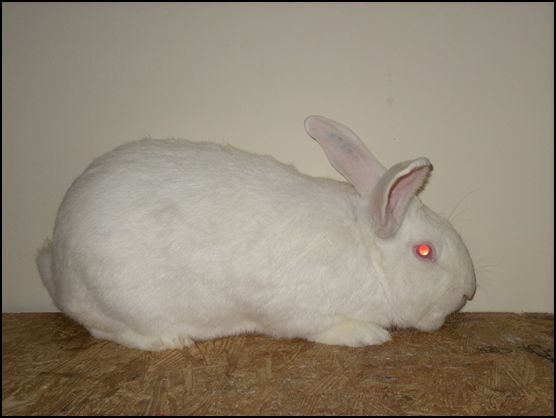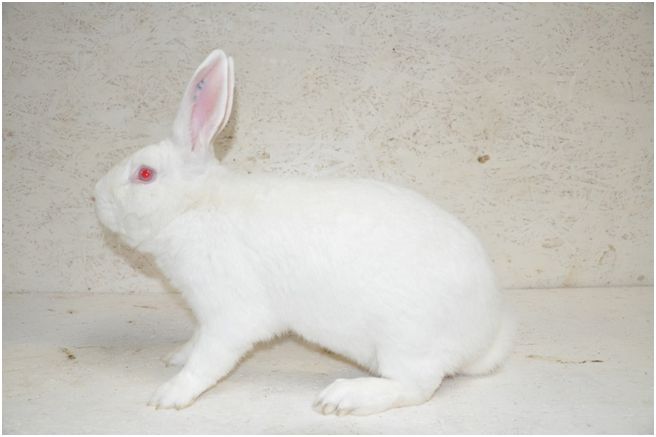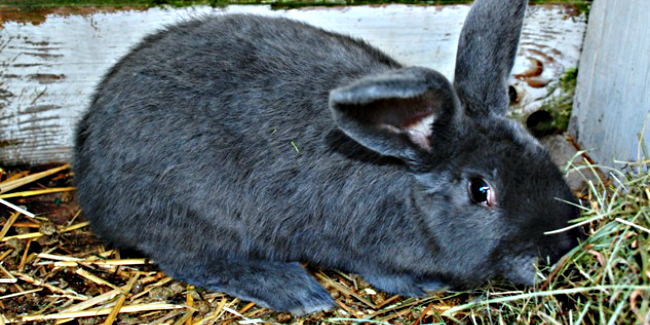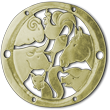Breeds
PANNON WHITE RABBIT

The development of the Pannon White population was initiated at the Kaposvár University at the late 1980s. During the first stage of its development (1988-1990), the population consisted of roughly 100 New Zealand White does selected for average daily gain and dressing out percentage by progeny test. The does were inseminated with the sperm of the bucks located at the Környe rabbit farm. Based on the progeny performances, the ranking of the bucks for average daily gain and dressing out percentage could be obtained. Involving other small rabbit farms in the process the participating farms could also be ranked. After some years, the progeny test was completed and the development of a new synthetic line –Pannon White– started. This line originated from the New Zealand White and Californian does inseminated with the best bucks from the rabbit farms which participated at the progeny test. After comparing 10 different crossing combinations, the 3 best ones were chosen and served as the basis of the Pannon White rabbit line. Selection targeted the average daily gain without decreasing the reproductive performance.
(source: Zs. Matics et al. Pannon Breeding Program in rabbit at Kaposvár University, World Rabbit Sci. 2014, 22: 287-300, doi:10.4995/wrs.2014.1511)
POPIELNO WHITE RABBITS

Autochthonous breed created from the no longer existing Polish Albino breed. Research on the creation began in 1950 by breeding with Giant Grey rabbits and selection for harsh conditions and good maternal traits. In 1989, Popielno White rabbits were included in the farm animal genetic resources conservation programme, financed by the Ministry of Agriculture and Rural Development. Average weight 4-5 kg, average litter size 7-8
(source: http://www.bioroznorodnosc.izoo.krakow.pl/futerka/charakterystyka/krolik-popielnianski)
MORAVIAN BLUE

http://www.szes-la.cz/stat/projekty/tahiti/pages/cz_animals.html
This rabbit is used for both meat and fur. belongs to large breeds of rabbits with desired weight 5.5 kg and more. The colour is steel blue with lighter shade.
PANNON WHITE RABBIT

The development of the Pannon White population was initiated at the Kaposvár University at the late 1980s. During the first stage of its development (1988-1990), the population consisted of roughly 100 New Zealand White does selected for average daily gain and dressing out percentage by progeny test. The does were inseminated with the sperm of the bucks located at the Környe rabbit farm. Based on the progeny performances, the ranking of the bucks for average daily gain and dressing out percentage could be obtained. Involving other small rabbit farms in the process the participating farms could also be ranked. After some years, the progeny test was completed and the development of a new synthetic line –Pannon White– started. This line originated from the New Zealand White and Californian does inseminated with the best bucks from the rabbit farms which participated at the progeny test. After comparing 10 different crossing combinations, the 3 best ones were chosen and served as the basis of the Pannon White rabbit line. Selection targeted the average daily gain without decreasing the reproductive performance.
(source: Zs. Matics et al. Pannon Breeding Program in rabbit at Kaposvár University, World Rabbit Sci. 2014, 22: 287-300, doi:10.4995/wrs.2014.1511)
POPIELNO WHITE RABBITS

Autochthonous breed created from the no longer existing Polish Albino breed. Research on the creation began in 1950 by breeding with Giant Grey rabbits and selection for harsh conditions and good maternal traits. In 1989, Popielno White rabbits were included in the farm animal genetic resources conservation programme, financed by the Ministry of Agriculture and Rural Development. Average weight 4-5 kg, average litter size 7-8
(source: http://www.bioroznorodnosc.izoo.krakow.pl/futerka/charakterystyka/krolik-popielnianski)



